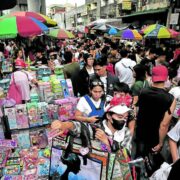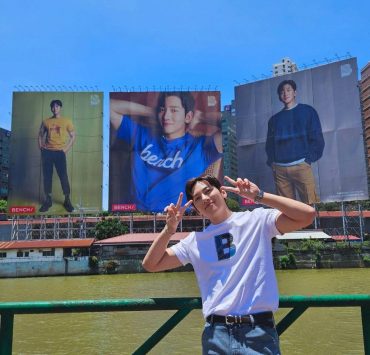Following Tes Pasola’s ‘paper’ trail
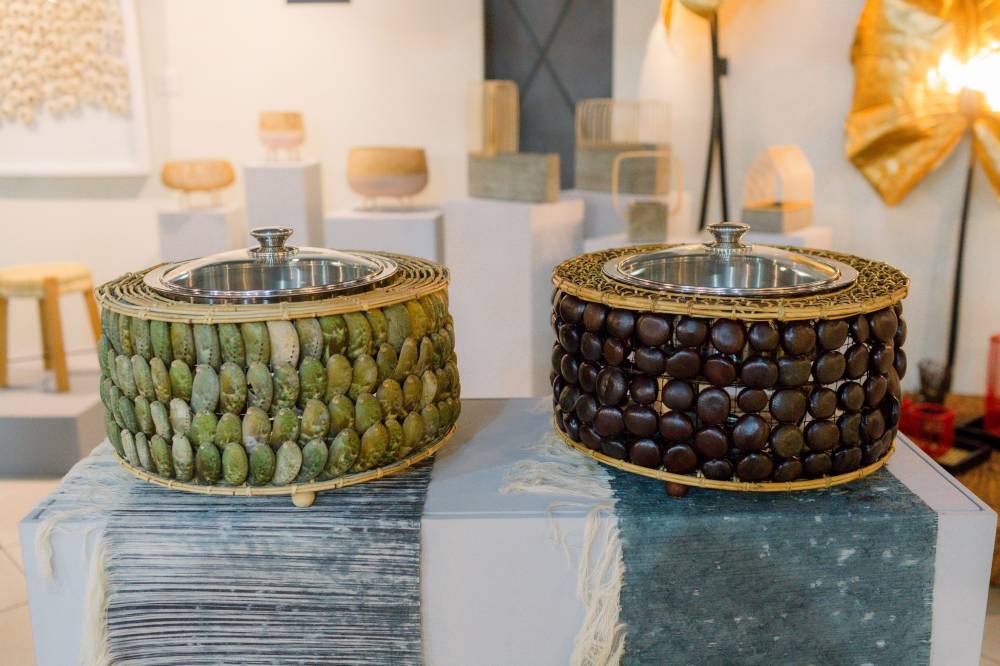
More than a designer and consultant for export companies, the late Teresita “Tes” Pasola was a creative force. The term “designer” fell short of capturing her boundless energy, which she poured into infusing innovation into a wide array of objects and interiors.
“Tes was prolific, helping companies from all over the Philippines achieve great success,” said designer Anthony “Tony” Gonzales, her longtime partner. “What truly set her apart was her unique approach to different materials.”
Pasola worked with astonishing speed, generating new ideas in mere minutes. “Be prepared when she designed for you,” Gonzales said. “Her standard was to create something unprecedented yet entirely feasible. She thrived on pushing boundaries.”
The Yuchengco Museum has organized a three-month exhibit, “Beyond Paper,” showcasing Pasola’s versatility as a designer of home accessories and visual artist, and her groundbreaking work with paper. “Tes never viewed paper as a flat surface or simply a writing material,” Gonzales, the exhibit curator, explained. “She saw its potential as a sculptural medium or a product.”
Mind Masters
It’s important to note that this exhibit is not a retrospective of Pasola’s entire career, as it would require exploring her early work for Mind Masters, a paper products company. When she married Sofronio “Ronnie” Pasola, the company’s owner, she began crafting stationery and boxes adorned with batik on Manila paper, and charming pig figurines made from dough.

Recognizing Pasola’s exceptional talent, Mina Gabor, executive director of the Center for International Trade and Export Missions (Citem), encouraged her to participate in major international trade shows.
Mind Masters pioneered in design-driven products and fostered partnerships with subcontractors nationwide. Pasola immersed herself in rural communities, collaborating with weavers. Her dedication was so profound that she was once mistaken for a rebel by the New People’s Army when she visited datus in the South.
Gonzales, a former employee, recalls training weavers to hand-paint their tribal designs when they couldn’t handle the increasing demand. Eventually, they learned silk screening. After her husband’s passing and the export industry’s decline, Pasola scaled down her business but maintained a loyal clientele and served as a consultant for Citem. She succumbed to breast cancer in 2022.
Long before “recycling,” “upcycling” and “sustainability” became buzzwords, Pasola was already transforming agricultural waste into design marvels. As a consultant, she favored coconut midrib for lamps and picture frames. Old denim rags, carved bull horns and driftwood found new life as a bar cabinet and a drawer. Volcanic ash became the handles for salad-mixing forks, while newspapers morphed into teddy bears. Pasola’s signature technique, the James Bound, involved binding die-cut papers and fanning them out into whimsical shapes. She used old newspapers as a starting point. Pineapple pulp and threads formed the basis of her table runners.
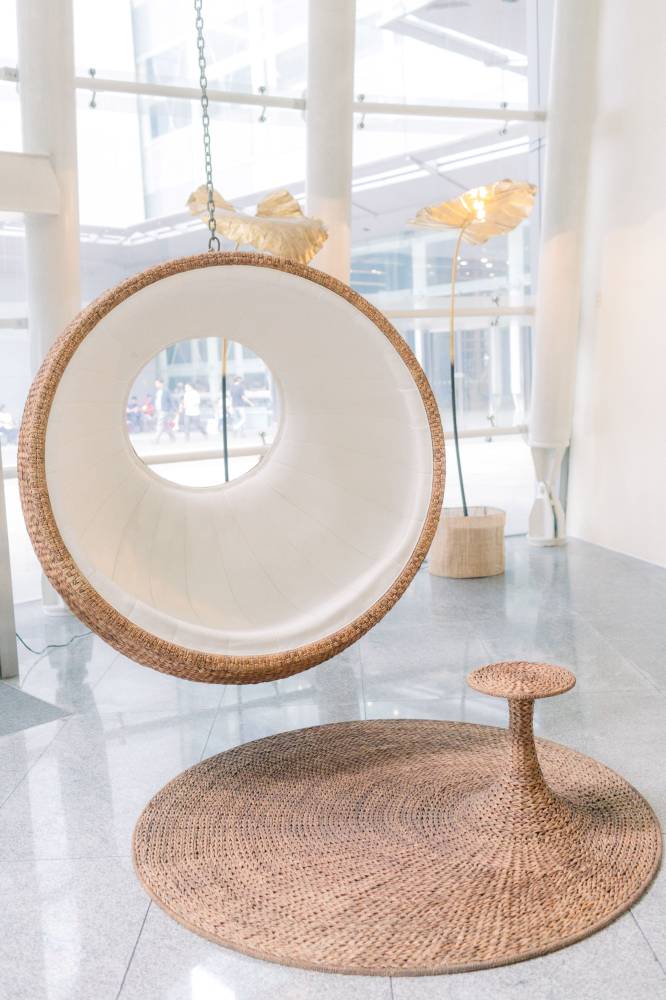
Visitors are greeted at the RCBC Plaza foyer by a floating pod, inspired by a coconut shell and a table seemingly rising from a water hyacinth rug. The first level of the exhibit showcases Pasola’s artwork on handmade paper, a departure from traditional painting media. Simple geometric forms in red, black and neutral hues float on the square canvases, creating a sense of quiet movement. Her painstaking technique of shaping paper into barnacle-like forms reflects her love of diving.The focal point is a cluster of suspended abaca rectangles, transformed through Pasola’s innovative techniques into textured masterpieces. These hover above a round table crafted from recycled bamboo and wrapped in repurposed pant rags.
James Bound
In stark contrast to the meditative artworks, the second exhibit area bursts with vibrant, award-winning home decor and accessories crafted by Filipino exporters. Humor was the underlying theme. Pasola’s interpretation of a peacock chair was quite literal—a simplified arched chair with a wire peacock perched atop it. The advent of LED lights inspired her to create suspended lamps from buntal hats and paper. Bedouin blankets, adorned with playful silk-screen designs, were transformed into charming pillow covers.
Pasola’s signature James Bound vases and tasseled decor added pops of color to the predominantly natural materials display. Beyond vases, this technique was ingeniously applied to stools and even a miniature BMW model during her time.The entertaining area was a feast for the eyes. Shunning shiny metal, she designed chafing dishes covered in mussel shells and bahugo seeds. Cake knives with root handles and teacups wrapped in colorful banig sleeves added to the eclectic mix.
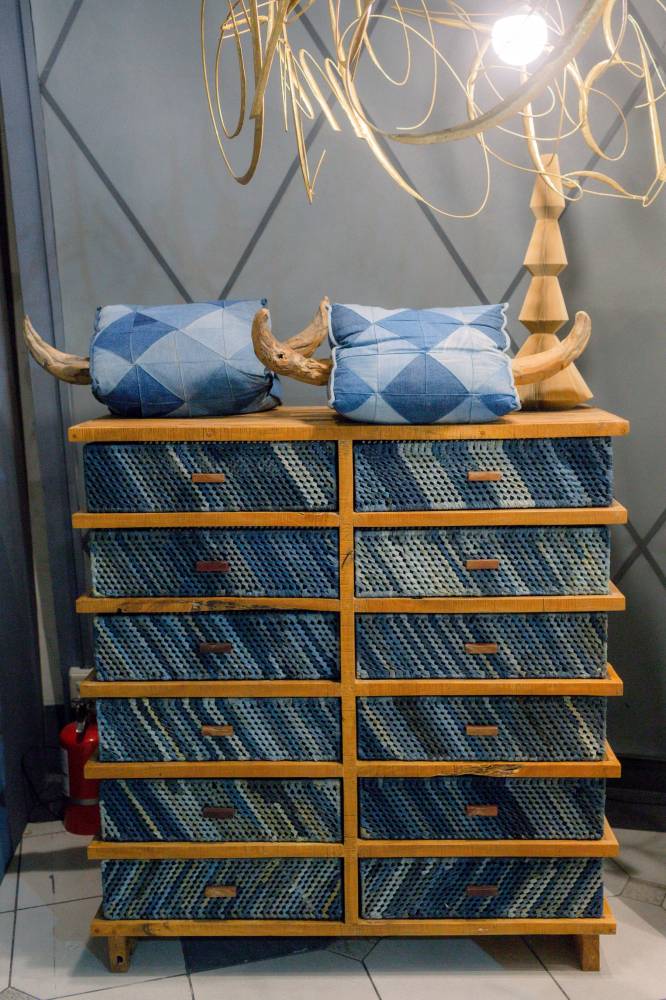
The pièce de résistance, however, were spoons and forks featuring handles carved with scripted words. This demonstrated exceptional craftsmanship in rounding the sharp edges of the letters. “Tes had a graphic sensibility and loved playing with letters,” Gonzales noted. Chairs built with alphabet backrests and a chandelier and candleholder, made from scripted words, further showcased this playful approach.
Unstoppable force
The exhibit only scratched the surface of Pasola’s design prowess, as it excluded her interior design projects, which encompassed everything from door handles to statement furniture and wall decor. Her signature style featured bold primary colors and neutrals, playful forms, and a meticulous sense of order.
A prime example of her work was a Chinese client’s apartment in Shenzhen, where her playful designs stood out in stark contrast to the sleek Italian furnishings of the affluent neighborhood, said Gonzales.
Pasola was a true original who refused to compromise her vision. However, many of her designs can’t be replicated. The James Bound technique, for instance, is heavily reliant on handmade paper produced by Pasola herself. Moreover, newspaper, a key component of her early James Bound works, is becoming scarce.
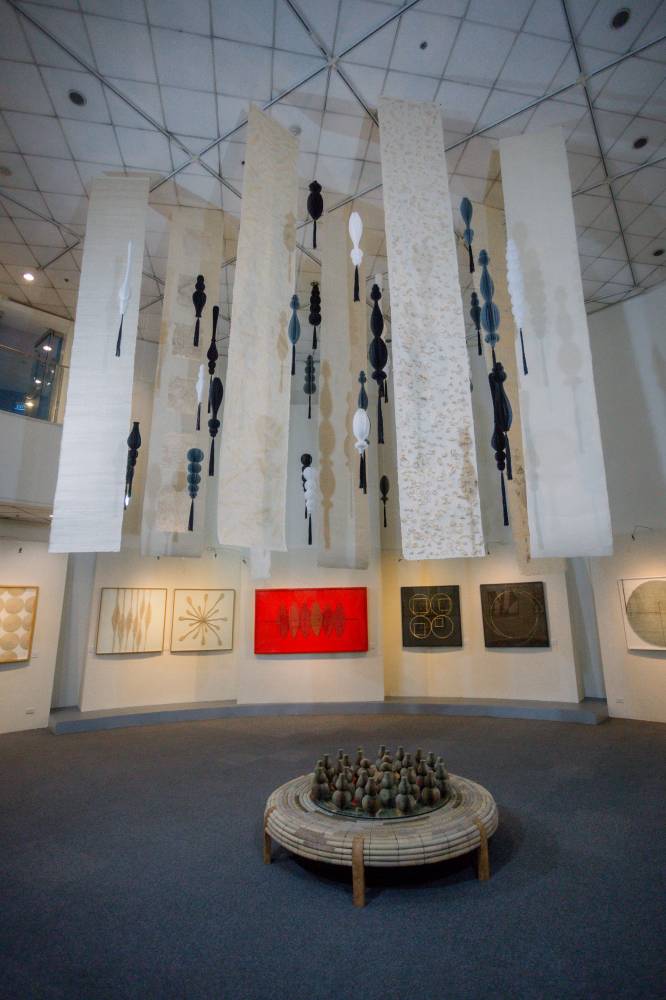
She was an unstoppable force who cared little for commercial constraints, Gonzales recalled. “Her sole focus was on creating, regardless of profit.”
Running until Oct. 26, “Beyond Paper” offers a glimpse into Pasola’s world. Her spirit of experimentation and her refusal to conform continue to inspire.




